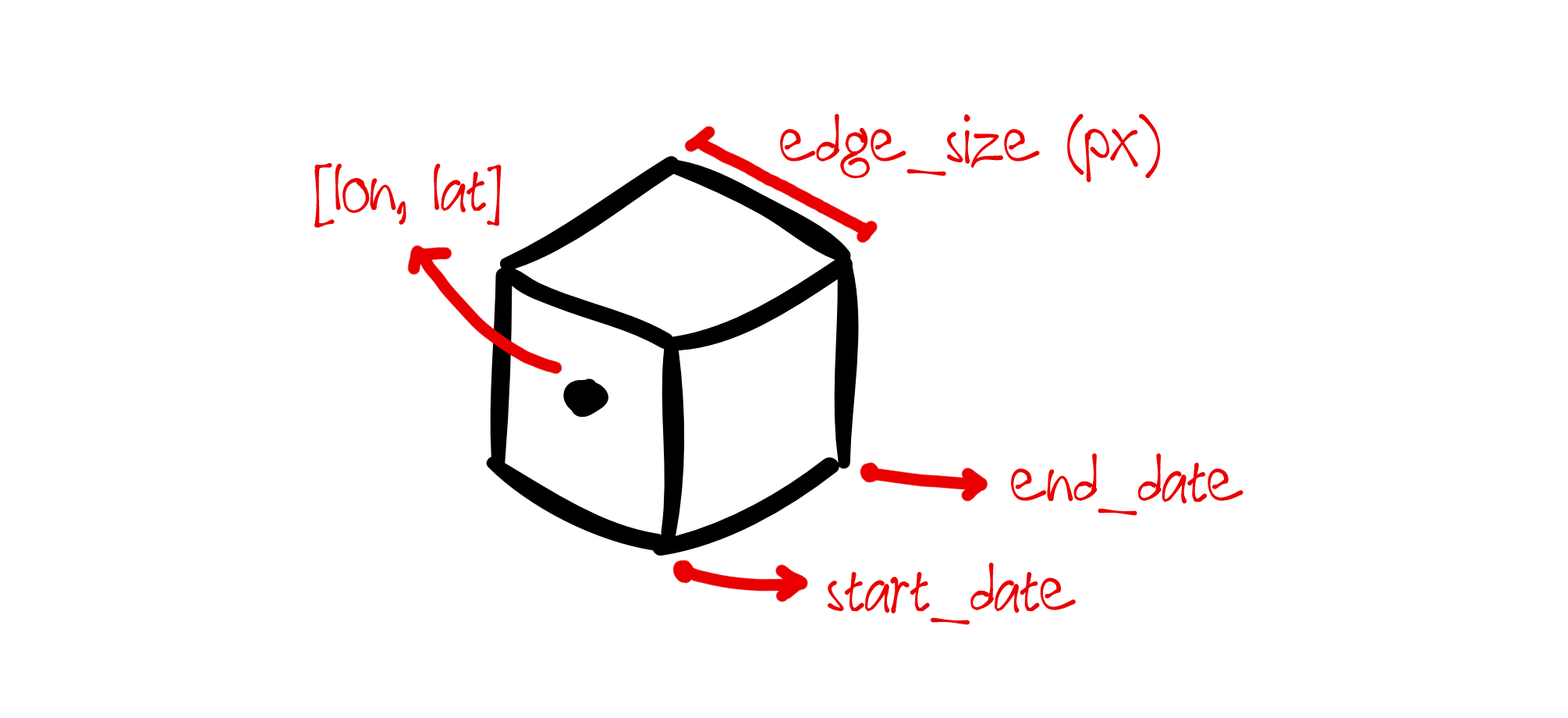Easily create EO mini cubes from STAC in Python
Project description
Easily create EO mini cubes from STAC in Python
GitHub: https://github.com/davemlz/cubo
Documentation: https://cubo.readthedocs.io/
PyPI: https://pypi.org/project/cubo/
Conda-forge: https://anaconda.org/conda-forge/cubo
Tutorials: https://cubo.readthedocs.io/en/latest/tutorials.html
Overview
SpatioTemporal Asset Catalogs (STAC) provide a standardized format that describes geospatial information. Multiple platforms are using this standard to provide clients several datasets. Nice platforms such as Planetary Computer use this standard.
cubo is a Python package that provides users of STAC objects an easy way to create Earth Observation (EO) mini cubes. This is perfectly suitable for Machine Learning (ML) / Deep Learning (DL) tasks. You can easily create a lot of mini cubes by just knowing a pair of coordinates and the edge size of the cube in pixels!
Check the simple usage of cubo here:
import cubo
import xarray as xr
da = cubo.create(
lat=4.31, # Central latitude of the cube
lon=-76.2, # Central longitude of the cube
collection="sentinel-2-l2a", # Name of the STAC collection
bands=["B02","B03","B04"], # Bands to retrieve
start_date="2021-06-01", # Start date of the cube
end_date="2021-06-10", # End date of the cube
edge_size=64, # Edge size of the cube (px)
resolution=10, # Pixel size of the cube (m)
)
This chunk of code just created an xr.DataArray object given a pair of coordinates, the edge size of the cube (in pixels), and additional information to get the data from STAC (Planetary Computer by default, but you can use another provider!). Note that you can also use the resolution you want (in meters) and the bands that you require.
How does it work?
The thing is super easy and simple.
- You have the coordinates of a point of interest. The cube will be created around these coordinates (i.e., these coordinates will be approximately the spatial center of the cube).
- Internally, the coordinates are transformed to the projected UTM coordinates [x,y] in meters (i.e., local UTM CRS). They are rounded to the closest pair of coordinates that are divisible by the resolution you requested.
- The edge size you provide is used to create a Bounding Box (BBox) for the cube in the local UTM CRS given the exact amount of pixels (Note that the edge size should be a multiple of 2, otherwise it will be rounded, usual edge sizes for ML are 64, 128, 256, 512, etc.).
- Additional information is used to retrieve the data from the STAC catalogue: starts and end dates, name of the collection, endpoint of the catalogue, etc.
- Then, by using
stackstacandpystac_clientthe mini cube is retrieved as axr. DataArray. - Success! That's what
cubois doing for you, and you just need to provide the coordinates, the edge size, and the additional info to get the cube.
Installation
Install the latest version from PyPI:
pip install cubo
Upgrade cubo by running:
pip install -U cubo
Install the latest version from conda-forge:
conda install -c conda-forge cubo
Install the latest dev version from GitHub by running:
pip install git+https://github.com/davemlz/cubo
Features
Main function: create()
cubo is pretty straightforward, everything you need is in the create() function:
da = cubo.create(
lat=4.31,
lon=-76.2,
collection="sentinel-2-l2a",
bands=["B02","B03","B04"],
start_date="2021-06-01",
end_date="2021-06-10",
edge_size=64,
resolution=10,
)
Using another endpoint
By default, cubo uses Planetary Computer. But you can use another STAC provider endpoint if you want:
da = cubo.create(
lat=4.31,
lon=-76.2,
collection="sentinel-s2-l2a-cogs",
bands=["B05","B06","B07"],
start_date="2020-01-01",
end_date="2020-06-01",
edge_size=128,
resolution=20,
stac="https://earth-search.aws.element84.com/v0"
)
Keywords for searching data
You can pass kwargs to pystac_client.Client.search() if required:
da = cubo.create(
lat=4.31,
lon=-76.2,
collection="sentinel-2-l2a",
bands=["B02","B03","B04"],
start_date="2021-01-01",
end_date="2021-06-10",
edge_size=64,
resolution=10,
query={"eo:cloud_cover": {"lt": 10}} # kwarg to pass
)
License
The project is licensed under the MIT license.
Logo Attribution
The logo and images were created using dice icons created by Freepik - Flaticon.
Project details
Release history Release notifications | RSS feed
Download files
Download the file for your platform. If you're not sure which to choose, learn more about installing packages.
Source Distribution
File details
Details for the file cubo-2023.7.0.tar.gz.
File metadata
- Download URL: cubo-2023.7.0.tar.gz
- Upload date:
- Size: 7.1 kB
- Tags: Source
- Uploaded using Trusted Publishing? No
- Uploaded via: twine/4.0.2 CPython/3.9.7
File hashes
| Algorithm | Hash digest | |
|---|---|---|
| SHA256 | 2ad78b564885e3085725d205050a544c10a33469717c7823ee81ca4cb220fc0b |
|
| MD5 | 14ced575cc5c5b905a0ece00b036d006 |
|
| BLAKE2b-256 | c39c1e4a0b25810031cb90e2d3cd664b0f11f7f4d3d66142b65535cecca5a775 |

























